A dash of white balsamic vinegar can transform any ordinary dish into something different and delicious.
Be it a fresh salad or roasted vegetables, put a spoonful, and it can taste heavenly.
Since it’s so tasty and useful, you might include it various recipes every day and not realize you finished it already.
But since the market has plenty of options, there is no need to worry.
You can choose from many kinds, including the following 5 best substitute for white balsamic vinegar.
You are sure to have at least one. So, it will work fine for any dish.
What is White Balsamic Vinegar?

It is a favorite product among cooking enthusiasts andproduced from crushed grapes (seeds, stems and skins).
The process of making it is a bit different than regular balsamic vinegar.
Instead of letting it simmer, manufacturers pressure-cook the ingredients so that it doesn’t turn brown.
Unlike the other type, it is not allowed to age a long time.
The final product is a golden-colored syrupy vinegar with a subtler flavor than regular balsamic.
Most chefs and cooking experts prefer it for its milder flavor and doesn’t turn the food brownish.
This particular variety is a safe food additive that you can use in many ways.
When not available, you can choose one of those mentioned below.
5 Best Substitutes for White Balsamic Vinegar
The amazing fact about food items is you can replace another product when something is not available.
The same goes for vinegar.
So here are some types that you can choose when balsamic white is not available.
1 – Balsamic Vinegar
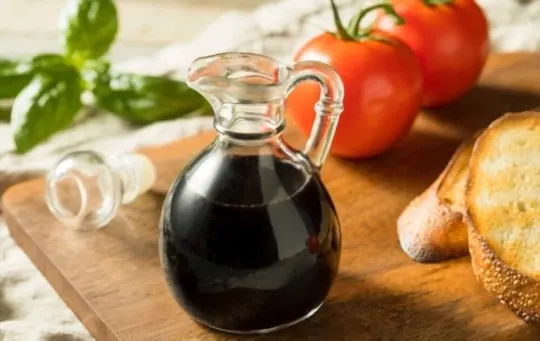
As both types come from grapes, one can work for the other in most dishes.
They (white balsamic and balsamic vinegar) have a similar flavor, but the latter is sweeter and darker in color.
Balsamic vinegar is more aged (twelve years at least) in wooden barrels.
So, it also adds to the flavor. It is suitable for both savory and sweet dishes like white balsamic.
You can add it to marinades, sauces and sprinkle on salads and even stir-fried dishes.
However, there are many counterfeit products on the market.
These can taste quite different because the ingredients are completely different.
So, check out the ingredients and don’t buy unknown brands.
You can put a smaller quantity when substituting white balsamic vinegar if you don’t want your dish to be too sweet.
Keep tasting and add extra until you get the right flavor.
Suitable ratio:
- 1 teaspoon white balsamic vinegar = ¾ teaspoon balsamic vinegar .
If you want a sweeter and stronger flavor, increase the quantity till you come to a point where you are satisfied.
2 – White Wine Vinegar
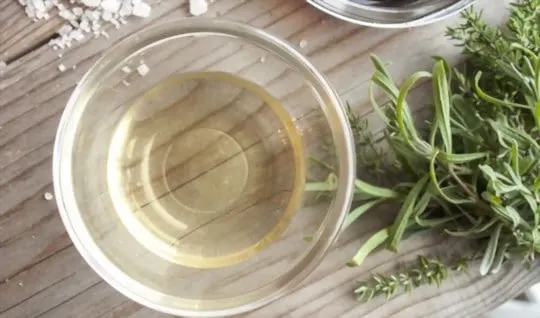
This is also a suitable type that you can add to dishes when the other is not at hand.
The fermentation and oxidation process of white wine makes it acidic with a lightly fruity flavor.
So, both are not so different from each other in terms of taste and appearance.
It is also a versatile product, and useful in different ways. Make use of it for braising, brining, and marinating.
Salad dressing, dips and sauces will also taste amazing when you add some amount.
There may be some varieties called white wine vinegar without the actual ingredients.
Hence, when you shop, read the ingredients thoroughly. Always make sure to buy only genuine brands.
When using it in place of balsamic white, you can add the exact quantity.
If you have some doubts, start with a little less amount. For example,.
Suitable ratio:
- You can use 1 teaspoon of white wine vinegar as a substitute for 1 teaspoon of balsamic vinegar.
3 – Rice Wine Vinegar
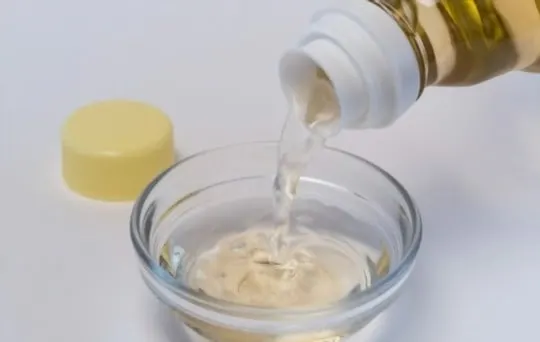
Popular in Asian cuisines, rice wine vinegar is also an excellent choice for replacing the other kind.
A sweet and sour condiment, it is created from a simple process.
Rice is put in water and allowed to ferment, and the process generates alcohol.
The extract is again allowed to ferment further, which then produces acetic acid.
This final product is rice wine vinegar.
It has a lighter hue, tastes very subtle and has less acidity; so, it fits the bill, and apt for many recipes.
Add in marinades, sauces, dips and put on salads and other dishes.
Rice wine vinegar is also a rich source of vitamin and minerals.
So, it can be a good habit if you consume a small quantity regularly.
When using it as a substitute, take a similar quantity unless instructed otherwise.
Suitable ratio:
- 1 teaspoon white balsamic vinegar = 1 teaspoon rice wine vinegar (you can use 3/4 teaspoon at first and add more also).
4 – Cider Vinegar
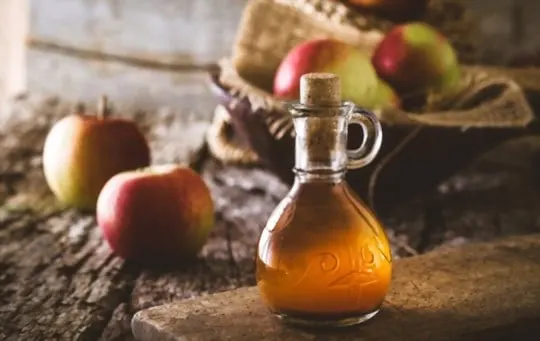
Made from fermented apples, it is one of the most widely used varieties.
It is a sour-tasting liquid with a hint of apple flavor. It is a suitable option instead of white balsamic vinegar.
You can put apple cider vinegar in a lot of dishes that ask for the other one.
Use it to marinate meat, add in sauces, dips and also include in salads and roasted or stir-fried food.
Add some sugar or honey if you want it to taste sweeter.
This condiment has been in use for centuries as a taste enhancer, but in recent times, there are also claims of it having many medicinal properties.
Suitable ratio:
- 1 teaspoon white balsamic vinegar = 1 teaspoon cider vinegar (add a little sweetener if you feel it is sour).
5 – Red Wine Vinegar

Being a fruity variety, the list can’t be complete without red wine vinegar.
It is extracted from fermented red wine, which is made of grapes.
It is also a suitable choice when the other variety is not available.
As with most kinds of vinegar, its use is endless. It works great in stews, dips, sauces, dressings and much more.
While similar in several ways, it can, however, be a little sour than white balsamic.
However, it is not a problem because some sugar can do the trick.
Suitable ratio:
- 1 teaspoon white balsamic vinegar = 3/4 teaspoon red wine vinegar (add extra if needed).
Conclusion
With a wide range of products being available, you have endless options.
You can keep not only one but two or three types at home.
As vinegar is so essential in cooking, you are likely to require it frequently.
If you don’t have any of those on the list, there are more kinds that you can select from.
If you follow the proper instructions, then you can get a similar flavor to white balsamic vinegar.
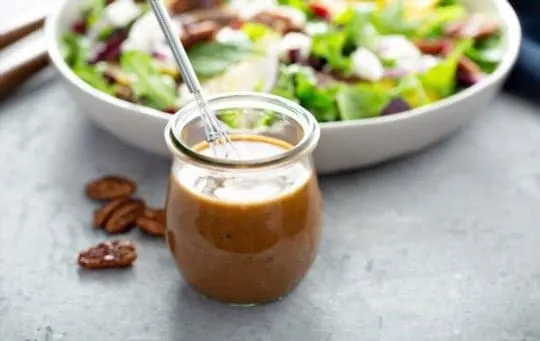
The 5 Best Substitutes for White Balsamic Vinegar
Ingredients
- Balsamic Vinegar
- White Wine Vinegar
- Rice Wine Vinegar
- Cider Vinegar
- Red Wine Vinegar
Instructions
- Choose your preferred substitute from the list of options.
- Organize all of your ingredients.
- Follow the substitution ratio to determine how much is required in your recipe.
